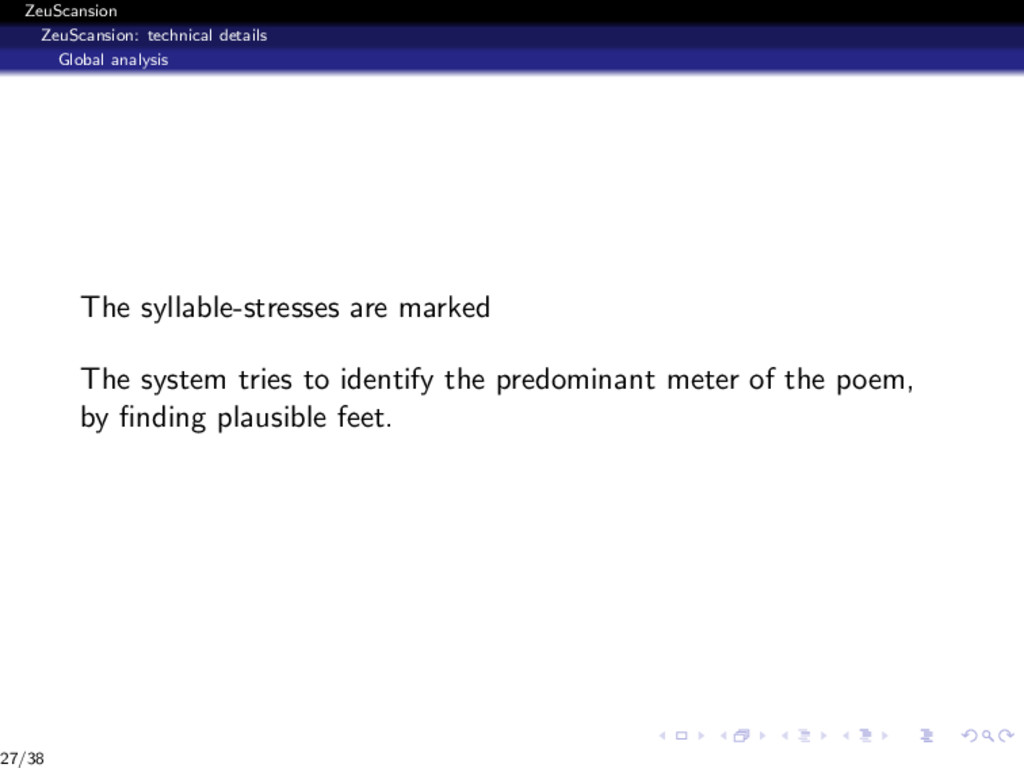

Occurs only in conjunction with its complementary foot the spondee, which assumes or borrows its pyrrhic partner’s missing beat. Metrical foot consisting of two consecutive slacks: υ υ. Also called “metrics” in the case of accentual-syllabic poetry. Study or practice or study of versification: what this tutorial is all about. Rare in polysyllables since 18th century. Stress laid, in deference to the metrical pattern, on a word or syllable that would in ordinary speech be slack. High or low quality of sounds in a syllable: a property of both consonants and vowels, it is one contributing factor in the determination of stress.

The imitation of a sound by the word that denotes it. The first eight lines of a sonnet, almost always a complete rhyming unit. The recurring, invariant pattern of slack and stressed syllables that a line of accentual-syllabic verse implies, and that the reader infers as an abstract, steady ground against which the actual verse rhythm plays its patterns of coincidence or counterpoint. Line ending where the last syllable is stressed. Metrical foot consisting of a slack and a stress: υ / masculine ending: Part of a line on either side of a caesura. Unmetered poetry, often exhibiting great rhythmic power and finesse in formal lineation, but outside the scope of this tutorial on metrics. The number of feet in a line gives their names to monometer (1), dimeter (2), trimeter (3), tetrameter (4), pentameter (5), hexameter (6, also called alexandrine), heptameter (7, also called “fourteeners”), octometer (8), nonometer (9), the very first and the last two being quite rare. Repeating pattern of slack and stressed syllables that forms the fundamental unit of meter. the clerihew, limerick, roundel, villanelle. Some, such as the ballade and roundeau, sestina and Petrarchan sonnet, are centuries old others are of recent invention or adoption, e.g. Strictly set patterns of meter and/or rhyme or word recurrence. “gravity” and “suavity.” See also masculine ending. “Feminine rhyme” occurs when like sounds appear in a line’s last stress and the succeeding slacks are repeated exactly, e.g. feminine ending:Ī line ending whose last syllable is a slack normal in trochaic and dactylic verse, it also frequently arises in anapestic and even iambic verse. epigram:Ī very short poem marked by pithy statement and witty turn.

enjambed line:Ī line of verse whose sense runs on, without terminal punctuation, into the next. Slurring of two syllables into one, across adjacent vowels or weak voiced consonants includes conventional poeticisms (“o’er” for “over,” “e’en” for “even”) and nonce phrases so marked (“th’ unseen”) or so treated in scansion, usually to contract an anapest into an iamb. Jam of inharmonious word sounds also called “cacophony.” See also consonance. Metrical foot consisting of a stress and two slacks: / υ υ dissonance:
#Poetry scansion tool free#
Tersest of rhyming forms, a 2-line pattern of verse, whether free-standing ( aa), gathered into stanzas (e.g., aabbcc), or extended at great length in narrative or deliberative poetry: aabbccddeeff.” “Open couplets” make free use of enjambed lines “closed couplets” are end-stopped, and are called “heroic couplets” when in iambic pentameter. Repetition of the same consonant sound in nearby words also called “euphony.” See also alliteration, assonance, dissonance. Also called “defective.” See acephalous line, terminal truncation. Line lacking one or more of the slack syllables that its meter strictly followed would specify. Mid-line pause, often marked by punctuation but not always. Quatrainin alternating iambic tetrameter and trimeter lines rhyming abxb, traditionally used in folk narrative and during modern times adapted to lyric poetry. Harmonious repetition of the same vowel sound in nearby words. Repetition of a word or phrase in initial position. Metrical foot consisting of two slacks and a stress: υ υ / anaphora: Repetition of the same initial sound in nearby words. Iambic hexameter line, usually with a strong midpoint caesura most familiar in Romance-language poetry but not rare in English. acephalous line:Ī “headless” line in iambic or anapestic meter, which omits (a) slack syllable(s) from the first foot. experiments), accentual-syllabic verse is based on recurrent units ( feet) that combine slacks and stresses in fixed sequence. Alike distinct from verse that is quantitative (measuring duration, as in classical Greek and Latin), accentual (counting only beats, as in Old English), and syllabic (counting only syllables, as in certain: 20th-cy. The prosodic mode that dominated English-language poetry 1400-1900, and that this tutorial exclusively addresses. Emphasis given a syllable in ordinary usage, as provided by a pronouncing dictionary.


 0 kommentar(er)
0 kommentar(er)
